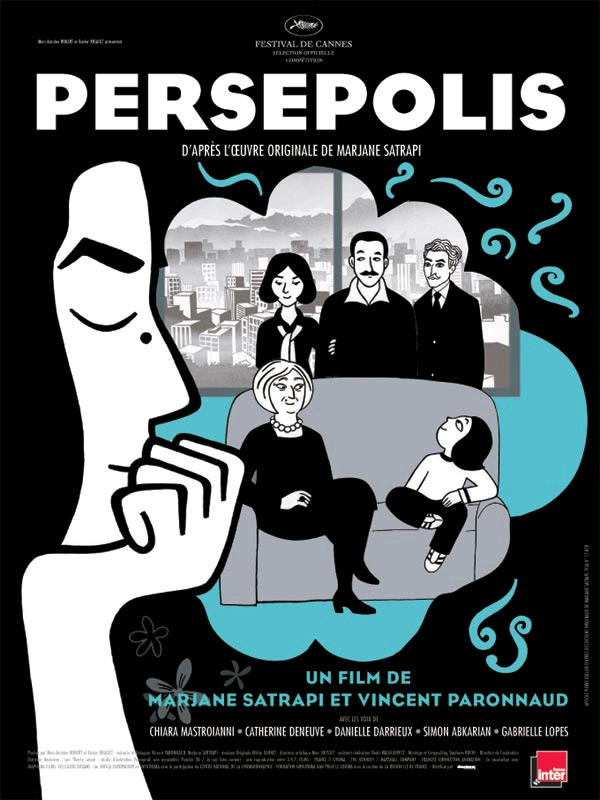The 2007 Persepolis is a small landmark in feature animation. Not because of technical innovationthough it has a handcrafted charm forgotten in the era of CGI-toon juggernautsbut because it translates an introspective, true-to-life, adult comic story into moving pictures. With the aide of French comic-book artist Vincent Paronnaud, Marjane Satrapi has turned her four autobiographical Persepolis volumes into 95 minutes of screen time. We first meet little Marjane (voiced by Gabrielle Lopes) in 1978. Shes the mouthy only child of a progressive Tehran family anxiously watching their shahs repressive government give way to the ayatollahs far worse fundamentalist revolution. The state of the nation steadily deteriorates, so Marjanes parents send their now-adolescent daughter (voiced by Chiara Mastroianni) into exile at a Viennese Lycée Française. Once displaced from the culture that had nourished her, Marjanes focus turns inwardshes victimized by boys and by her alien pubescent body, and starts freely sampling subcultures in an attempt to re-establish her sense of self. The films latter chapters bring her home, where the strictures of Islamic law have pulled even tighter. The accessibility of Satrapis firsthand addresshow she refits epic national tragedy to an identifiably personal scalehas made Persepolis college curriculum. Screened at Gould Hall; discussion follows. (NR) NICK PINKERTON
Tue., July 7, 7 p.m., 2009




